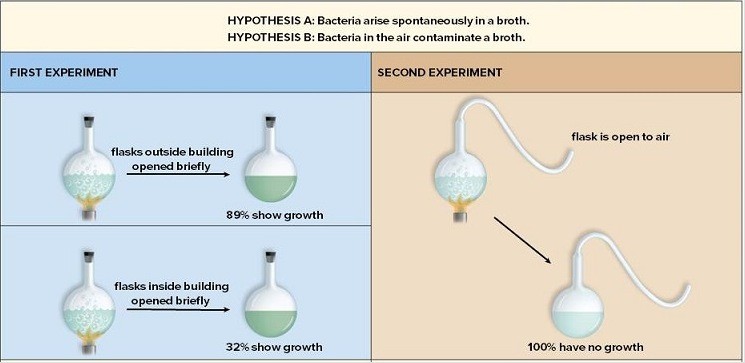Pasteur's experiments are depicted in this diagram. Do the results of the first experiment confirm the prediction of Hypothesis A or Hypothesis B? Explain. 
What will be an ideal response?
The growth in the flasks of the first experiment suggests that the organisms that grew in the broth came from the environment. There were more organisms in the air outside of the building than in the air inside of the building. There was no growth in the flasks that were not exposed to environmental contaminants in the second experiment. Both experiments together helped to negate the idea of the spontaneous generation of organisms from sterile broth.
You might also like to view...
The maximum number of individuals of a
species that a given environment can sustain indefinitely defines
a. the carrying capacity of the environment. b. exponential growth. c. the doubling time of a population. d. the density-independent factors. e. all of these
Egg-laying mammals
a. have no nipples yet produce milk. b. are commonly found in North America. c. are hairless. d. are confined to South America. e. bear their young into permanent pouches.
The endocrine system functions in
a. conduction. b. contraction. c. hormonal control of body functioning. d. protection against disease. e. cell production.
Developmental Drosophila genes, that when mutated cause the loss of alternate segments in the larva,
are called:a. embryonic segment genes. b. larval segmentation genes. c. segment polarity genes. d. pair-rule genes. e. gap genes.